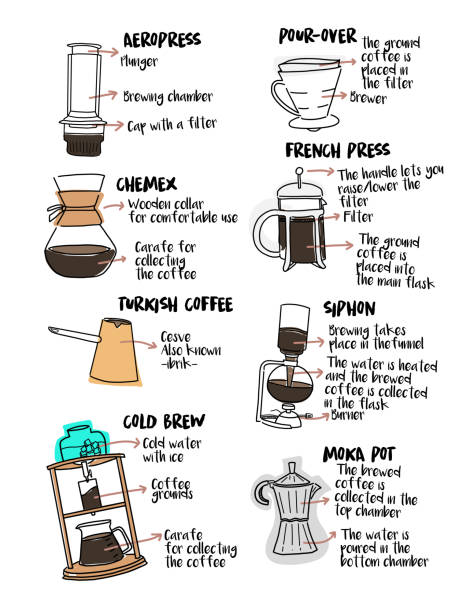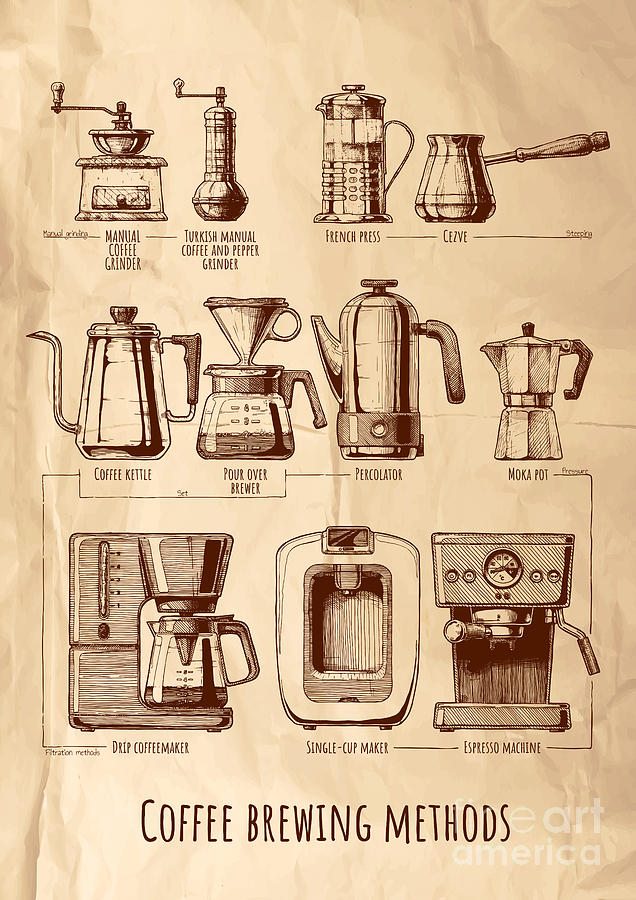Coffee Brewing Methods: Opening the Secrets to the Perfect Cup in the house
Coffee Brewing Methods: Opening the Secrets to the Perfect Cup in the house
Blog Article
The Science Behind Coffee Developing: Just How Temperature Level and Time Affect Your Drink
Understanding the science behind coffee brewing reveals that temperature and time are not simple variables however critical aspects that determine the drink's flavor profile and overall top quality. As we check out the nuances of these aspects, the question develops: how can one efficiently balance temperature and time to achieve that perfect brew?
The Chemistry of Coffee Extraction
The chemistry of coffee extraction dives into the intricate procedures that change raw coffee beans right into the fragrant drink enjoyed worldwide. This improvement mostly includes the solubility of numerous substances existing in the beans, which are influenced by variables such as grind size, water top quality, and the brewing approach used.
During the developing procedure, warm water works as a solvent, removing soluble compounds, consisting of high levels of caffeine, lipids, acids, and sugars, from the coffee premises. Each compound adds to the flavor profile, scent, and body of the last beverage. Acids are liable for tasty and intense notes, while oils add to a rich mouthfeel.
The initial phases of brewing remove acids and sugars, leading to a positive level of acidity, while long term removal can lead to anger due to over-extraction of unwanted compounds. Comprehending these chemical interactions is crucial for enhancing developing strategies, as the equilibrium between removal time and water temperature can dramatically affect the total quality of the coffee.
Ideal Brewing Temperatures
Locating the appropriate brewing temperature is essential for unlocking the full capacity of coffee flavors and aromas - coffee brewing methods. Research indicates that the optimum array for developing coffee exists in between 195 ° F to 205 ° F(90 ° C to 96 ° C) Within this array, the removal process efficiently liquifies the desirable soluble compounds in coffee beans, leading to a delicious and balanced cup
Brewing at lower temperatures, such as below 195 ° F(90 ° C ), may lead to under-extraction, generating an acidic and weak brew with low-key tastes. Conversely, brewing at temperatures surpassing 205 ° F(96 ° C) can lead to over-extraction, generating a rough and bitter taste because of the excessive dissolution of undesirable substances, such as tannins.
Additionally, the ideal brewing temperature level can vary depending on the coffee bean type and roast level. Lighter roasts usually benefit from somewhat greater temperature levels to boost their complicated flavor accounts, while darker roasts may be better suited to reduced temperature levels to alleviate anger.
Eventually, maintaining accuracy in developing temperatures is essential for accomplishing an unified equilibrium of tastes, making certain that every mug of coffee supplies a gratifying sensory experience.
Effect of Brewing Time
Brewing time plays a crucial role in establishing the taste profile and overall quality of coffee. Much shorter developing times can result in under-extraction, leading to a weak or sour flavor, as not sufficient soluble compounds are dissolved.
Ideal brewing time varies depending on the approach made use of and the grind size of the coffee. A French press usually needs regarding 4 minutes, while espresso removal is usually finished within 25 to 30 secs. It is vital to calibrate brewing time in combination with other variables, such as water temperature and coffee-to-water ratio, to accomplish the desired flavor account.
Understanding the find this impact of developing time makes it possible for coffee lovers to fine-tune their developing techniques, eventually enhancing the sensory experience of their cup (coffee brewing methods). With careful interest to this variable, one can open the complete possibility of the coffee, disclosing its special attributes and nuances
Brewing Methods and Their Results

As an example, methods like French press and chilly mixture permit for a much longer steeping time, causing a fuller body and durable taste as a result of boosted extraction of oils and soluble solids. Alternatively, coffee developing uses high stress and a shorter removal time, producing a focused shot that highlights extreme flavors and a rich crema.
Pour-over techniques, such as Chemex or V60, supply an even more controlled extraction process, allowing the maker to manipulate flow rate and water distribution, which can enhance brightness and clearness. At the same time, percolation techniques cycle websites water through the coffee grounds several times, bring about a stronger, typically bitter taste.
Last but not least, making use of paper filters versus steel filters can likewise impact the last preference; paper filters commonly produce a cleaner mug by capturing oils and fine fragments, while metal filters enable even more oils to travel through, adding to a fuller mouthfeel - coffee brewing methods. Understanding these subtleties can raise the coffee experience considerably
Tips for Improving Your Mixture
A well-executed brew can transform even the most basic coffee into an amazing experience. Grind the beans just before brewing to take full advantage of freshness, guaranteeing the work size matches your developing method-- coarser for French press and finer for coffee.
Water high quality plays an important role; usage filtered water devoid of impurities. The excellent developing temperature level ranges between 195 ° F and 205 ° F(90 ° C to 96 ° C ) useful site As well hot can blister the coffee, while too trendy may under-extract tastes.
Timing is just as vital. For immersion approaches, steeping for three to 5 mins is optimal, whereas drip approaches typically take around five mins. Experiment with brew times to locate your favored strength.

Final Thought
In summary, the detailed partnership in between temperature and time is paramount in the coffee developing procedure. Understanding these clinical concepts empowers people to refine their developing methods, eventually leading to an extra balanced and enjoyable coffee experience.
Recognizing the science behind coffee developing exposes that temperature and time are not mere variables however crucial aspects that dictate the drink's taste account and general quality. Understanding these chemical communications is critical for maximizing developing techniques, as the balance in between removal time and water temperature level can substantially influence the total high quality of the coffee.Brewing time plays a pivotal role in figuring out the taste profile and general top quality of coffee. By concentrating on these elements-- bean top quality, grind size, water temperature, soaking time, and proportion-- you can elevate your coffee brewing procedure, resulting in a consistently premium cup.
In recap, the complex relationship between temperature level and time is extremely important in the coffee brewing process.
Report this page